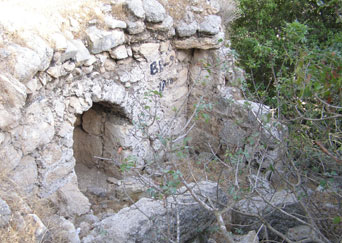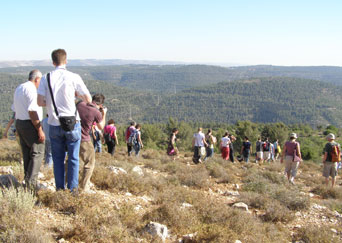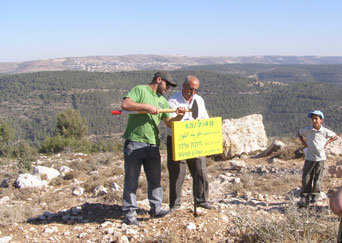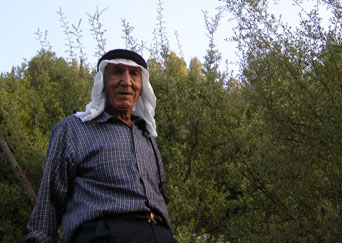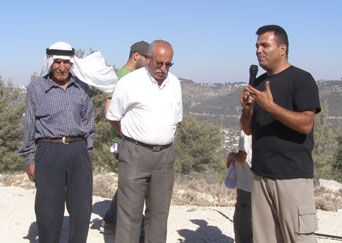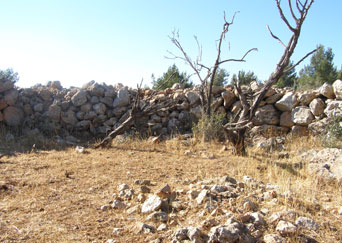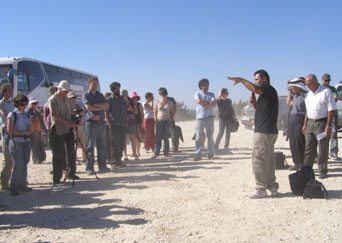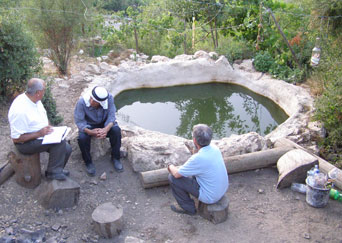Fifteen kilometers west of Jerusalem, five kilometers west of the village of 'Ayn Karim, three kilometers north of al-Qastal, and next to the village of Sataf, in the middle of JNF forests, are the remains of Khirbat al-Lawz. It was one of the area's many villages whose residents were forced to abandon them after an attack that was part of Operation Dani, that began with the capture of al-Ramle and al-Lydd, and then, on 13.7.1948, the capture of Suba (on whose lands Kibbutz Tzuba was established) and its environs in order to widen the "Jerusalem corridor". The residents of Khirbat al-Lawz remained in the hills near the village – like Ras abu-'Ammar and Bab al-Bahr – hoping to return at the end of the war, but soldiers from the Har'el Brigade didn't allow them to come back, and after a few weeks chased them off the hills, toward Bethlehem, Jerusalem and Jericho . Most of Khirbat al-lawz's refugees now live in the Ramallah area – in the Qalandiya refugee camp and in Beitunya – and in . Today, all the village buildings stand in ruins.
On Saturday, 7 June 2008, about fifty of us toured the village. We accompanied 'Abd al-Fattah Hassan Attallah (Abu Ghazi), one of the village's refugees, Ghazi, his son, his grandsons and a few other young people, children of the Khirbat al-lawz refugees. Abu Ghazi (75) stood on the ruins of his family's home. We drove a post into the floor of the house to which a sign was attached with the name of its owner: Hassan Atta Allah.
Abu Ghazi told us about the social and cultural life of the village, and about its flourishing agriculture that existed up to the day they fled.
Dan Golan graciously helped us with the tour, and he also told us about the history of the village, which he had studied as part of his research on the area. Dan said that the village buildings were demolished in stages. The first stage was apparently immediately following the flight of the villagers – and while they were still on Ras abu 'Ammar – in the framework of Israeli army maneuvers. Some of the buildings were destroyed by members of Kibbutz Tzuba who scavenged iron bars to build the kibbutz cow barn. The final stage was, apparently, immediately after the Six Days War in 1967, because of fears that the refugees, who had again been conquered, would return to the homes that had been captured in 1948.
We erected signs commemorating the village, and distributed a booklet, "Remembering Khirbat al-Lawz", that we had prepared for this tour. The booklet recounts the story of the village, and includes interviews with refugees.
The tour was implemented with the support of the Mennonite Central Committee.
